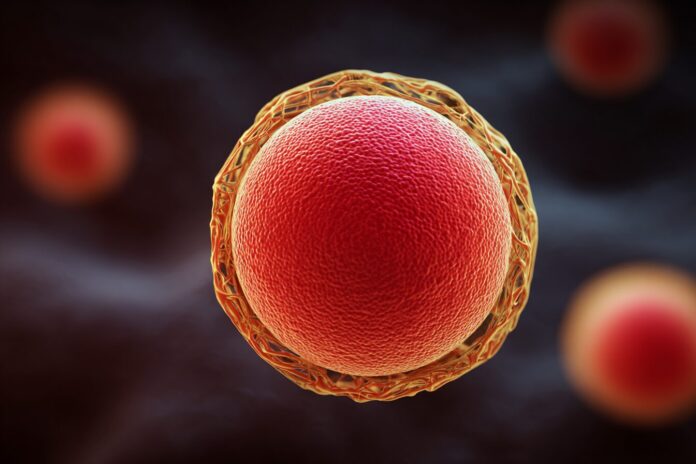Introduction: The Unstoppable Bacterium
When it comes to surviving the most lethal hazards on Earth, one microscopic marvel stands apart: Deinococcus radiodurans. Nicknamed ‘Conan the Bacterium’, this extremophile has captivated scientists with its ability to endure conditions that would typically be fatal to other life forms. Most importantly, it withstands radiation doses over 28,000 times what would kill a human being, paving the way for revolutionary research in biotechnology and space exploration.
Because of its unparalleled resilience, D. radiodurans offers unique insights into survival under extreme environmental stress. Therefore, scientists are keen to understand its mechanisms, which might be applied in mitigating radiation damage in humans or even in developing novel radiation-resistant materials. As highlighted by Northwestern University, this tiny organism raises important questions about life’s durability and adaptability.
What is Deinococcus Radiodurans?
At its core, D. radiodurans is a gram-positive, red-pigmented bacterium known for its remarkable resistance. Discovered in 1956, its origins are as curious as they are extraordinary; it was first identified in a can of spoiled meat treated with a lethal dose of radiation. This discovery is a testament to its formidable survival tactics in the face of extreme challenges, including cold, dehydration, and vacuum environments.
Besides facing harsh radiation, the bacterium also adapts to other severe conditions with ease. Because it thrives in what most organisms would consider uninhabitable, the study of D. radiodurans continues to inspire research into extreme microbial life. For extended reading on its characteristics and history, please consult the Wikipedia entry on Deinococcus radiodurans.
The Secret to Extreme Radiation Resistance
Historically, it was believed that the bacterium’s radiation resistance was mainly due to its extraordinary DNA repair mechanisms. However, recent research shows that its survival owes much to a sophisticated antioxidant defense system. Most importantly, a complex structure known as MDP—a ternary complex of manganese ions, phosphate, and a specialized peptide—plays a critical role. This composite shield is far more effective in neutralizing the reactive oxygen species (ROS) induced by radiation than any singular component could be.
Moreover, the high manganese and low iron concentrations in D. radiodurans have been found to protect essential proteins from oxidative damage. Because this balance diverges from that observed in most organisms, where radiation-induced DNA damage is typically fatal, the bacterium employs a multifaceted approach. For further insights into the MDP mechanism, readers are encouraged to review the findings on Northwestern University’s Radiation Resistance Study and related research available at PNNL.
How Does the MDP Complex Work?
Most importantly, the MDP complex serves as a chemical shield by scavenging ROS before they can damage cellular components. Because these reactive molecules pose a severe threat to vital proteins and DNA, the rapid neutralization afforded by the MDP complex is central to the bacterium’s survival. Therefore, this mechanism shifts the focus from mere DNA repair to comprehensive protein protection.
Additionally, the MDP complex demonstrates how microscopic chemical interactions can have macroscopic effects on cell survivability. Besides that, the research underlines the potential of synthesizing similar compounds for practical applications in medicine and space exploration, as documented in studies such as those published by Wiley Online Library.
Unique Biological Mechanisms at Play
Beyond the manganese-based MDP shield, D. radiodurans utilizes several additional strategies to amplify its resilience. Among these, the production of nitric oxide has garnered noteworthy attention. Because nitric oxide aids in cell division and repair processes after radiation damage, its production is critical for the bacterium’s recovery. Most importantly, this mechanism underscores the bacterium’s dynamic response to environmental challenges.
Furthermore, advanced genetic studies have mapped several manganese-binding proteins in its genome. These proteins contribute to a complex network that addresses oxidative stress cumulatively. Therefore, it is not just a single factor but a concerted effort across several biochemical pathways that safeguards this bacterium. For more detailed information on these biological adaptations, please see the special issue on radiation-resistant microorganisms published by MDPI.
Implications for Science and Technology
Because the survival strategies of D. radiodurans are so extraordinary, they offer significant implications for future scientific breakthroughs. Most importantly, the insights gained from its antioxidant systems could be leveraged to protect astronauts from cosmic radiation during deep-space missions. Moreover, synthetic antioxidants inspired by its mechanisms may serve in mitigating the effects of radiological disasters. Thus, research into this bacterium is not only academically fascinating, but also practically valuable in areas such as medicine, biotechnology, and environmental safety.
Besides that, the lessons taught by this resilient microbe may guide our search for extraterrestrial life on radiation-intense planets. Because the mechanisms it employs make it one of the most robust organisms known, understanding its biology could inform both protective technologies on Earth and life-detection strategies in space. Recent innovations, as demonstrated in Northwestern University’s latest findings, continue to underscore its vast potential.
Conclusion: The Legacy of an Indestructible Organism
The ongoing study of D. radiodurans fundamentally challenges our understanding of life under extreme conditions. Most importantly, its survival not only embodies the ingenuity of evolution but also serves as a beacon inspiring the next generation of scientific discovery. Because it thrives where others cannot, this bacterium exemplifies nature’s capacity to adapt, innovate, and overcome.
Therefore, as research continues, we anticipate uncovering even more secrets from this indestructible organism. Its unique survival strategies pave the way for breakthroughs in medicine, space exploration, and environmental protection. In conclusion, the legacy of D. radiodurans is a reminder of humanity’s potential to harness natural innovations for a safer and more resilient future.
References
- Wikipedia: Deinococcus radiodurans
- Northwestern University: How ‘Conan the Bacterium’ Withstands Extreme Radiation
- PNNL: New View on Radiation-Resistant Microbe
- MDPI: Special Issue on Radiation Resistant Microorganisms
- Wiley Online Library: Radiation‐Resistant Bacteria Deinococcus radiodurans‐Derived Applications



